Content
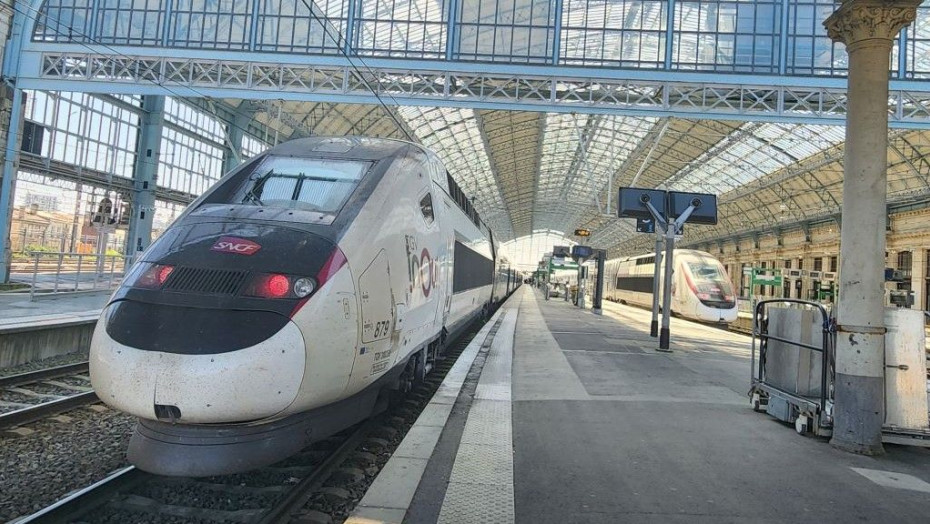
TGV trains: An Overview
As there are now multiple types of TGV trains operating within and to/from France, this overview explains what the differences are; and what they have in common.
Share
At a Glance
Travel Pass Supplement
Rail Pass Reservation Fees
Reservations
Compulsory
Time of Day
Day
Catering
Food services available
Bistro (bar food and take away meals)
Accessibility
Accessing the train
Wheelchair Spaces
Train Specification
Attributes of the train
High Speed (total journey)
Has a Conductor
Country
Which country these trains operate in.
France
Travel Passes
Eurail
InterRail
TGV trains are French high speed trains operated by SNCF, the national rail company in France.
They travel up to 320 km/h – on parts of the LGV Est between Paris and Strasbourg and on the relatively new route between Paris and Bordeaux.
Though 300 km/h is the maximum speed of most TGV services.
A note re: the At A Glance summary above:
The summaries we provide for European train services are designed to be used for one specific train and not five, so please note:
- TGV Océane trains are an exception to some of these rules because they are new; they do have power sockets in 2nd class and have bike spaces etc.
- TGV Duplex AND TGV Océane trains are double-decked.
- The rail pass reservation fee info refers to journeys within France for international fees see the summaries of the international services below.
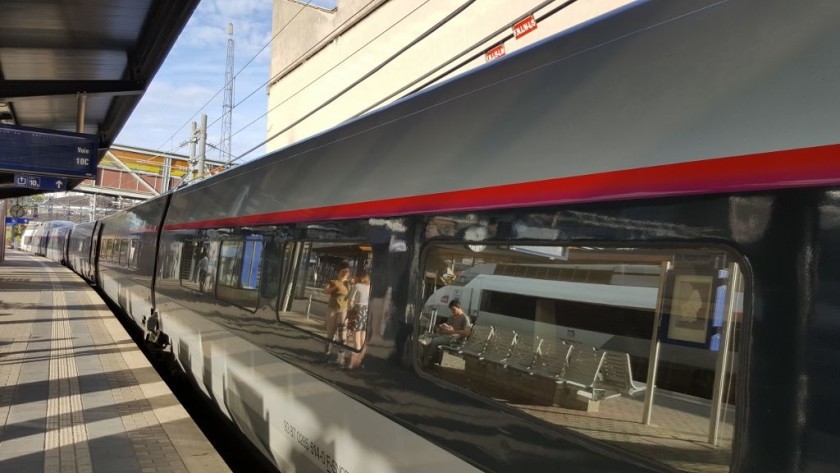

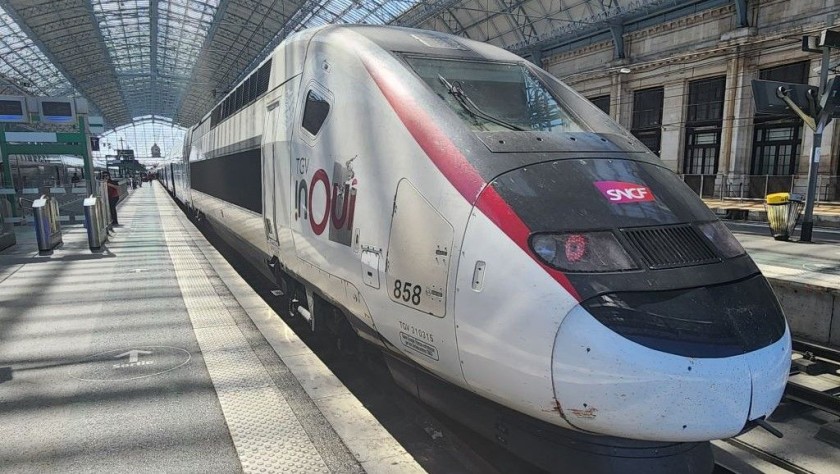
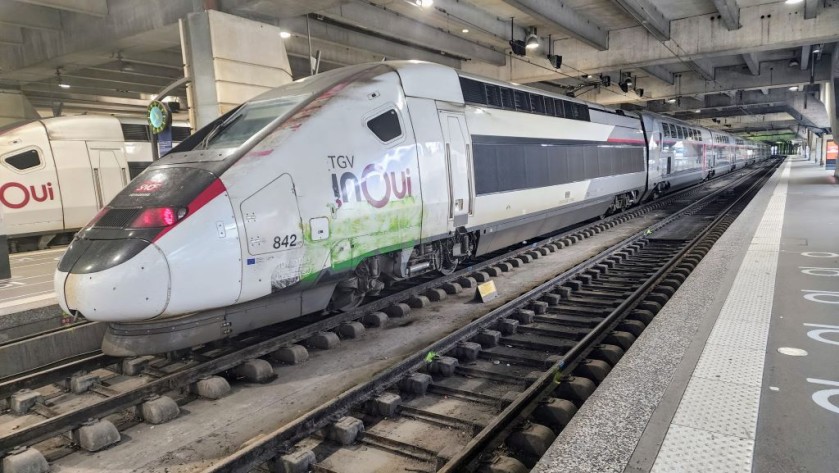
Travel summary:
The seven things worth knowing when travelling by any TGV standard service within France are:
(1) When boarding a TGV you must sit in the reserved seat(s) which will be specified on your ticket(s).
On your ticket(s) 'voiture' = coach/carriage number, ‘Place Assise’ = the seat number.
(2) The luggage allowance is a maximum of 2 large suitcases + one piece of hand luggage per person.
(3) Non folding bikes which haven't been disassembled and cased can't be taken on board the TGV Duplex trains, but they can be taken on board the other TGV trains.
(4) TGV trains don’t convey restaurant cars, they only have bar cars, this is the current menu.
(5) The at-seat catering service on some TGV trains is only available if you order meals to be delivered to your seat prior to boarding.
The first stage of booking this catering service is to enter the train number, (not the departure time) which will be on your ticket, into this order form.
(6) TGV trains can travel for fairly long distances on conventional non-high speed lines.
This includes these routes
(1) Bordeaux – Hendaye & Tarbes & Toulouse
(2) Rennes – Brest & Quimper
(3) Montpellier – Perpignan/Toulouse
(4) Marseille – Nice
(5) Macon (north of Lyon) – Dijon
(6) Mulhouse – Strasbourg
(7) On non-international services, most of the on-board announcements will only be made in French.
Sunmary of the different types of TGV train:
There are five different types of TGV trains in service:
Atlantique l Duplex l Océane
TGV Duplex and TGV Océane trains are double decked.
*TGV-Reseau trains are used on all high speed services between Brussels/Bruxelles and cities in France other than Paris; hence the link above points to TGV (Bruxelles/France) trains.
There are some other technical differences between the TGV trains, but these five categories will incorporate the key differences in the travel experiences.
However, when looking up journeys within France by TGV train, the type of train that will be used for a departure won’t be specified.
Though the journey guides on SMTJ will give you a good idea of what type of TGV train you’re highly likely to be taking.
The 'InOui' services:
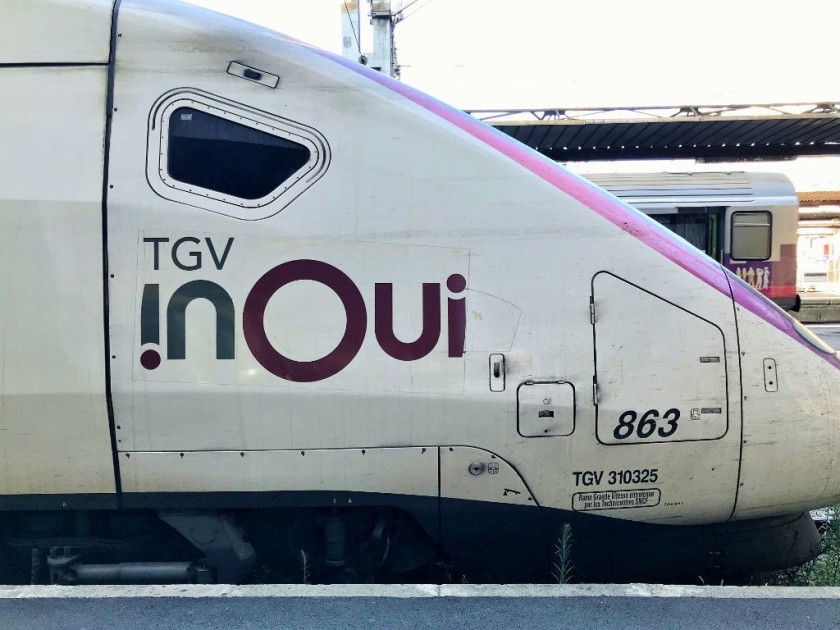
To make the distinction between the standard (superior) TGV services and the low-cost Ouigo services clearer, the French national rail operator, SNCF now classifies most of the standard TGV trains as 'InOui' services.
Many InOui branded services offer an enhanced Wi-Fi connectivity and on the departures on which the TGV Duplex trains are used, it often indicates a modernised interior including power sockets in Seconde/2nd class.
All TGV Oceane trains offer this enhanced standard of service because they are new trains.
The services that are branded 'InOui' also offer Business Premiére Class in addition to regular Premiére/1st class.
The trains used for TGV services can have different colours on their exteriors.
A blue/green colour scheme has now been almost entirely replaced by a 'Carmillon' red/grey colour scheme.
All the TGV Océane trains are appearing in the 'Carmillon' scheme because they are (1) new trains and (2) are classed as 'InOui' services.
The on board travelling experiences can vary slightly between the different types of TGV trains but these facts and tips we have singled out below are common to all TGV InOui services.
Ouigo services:
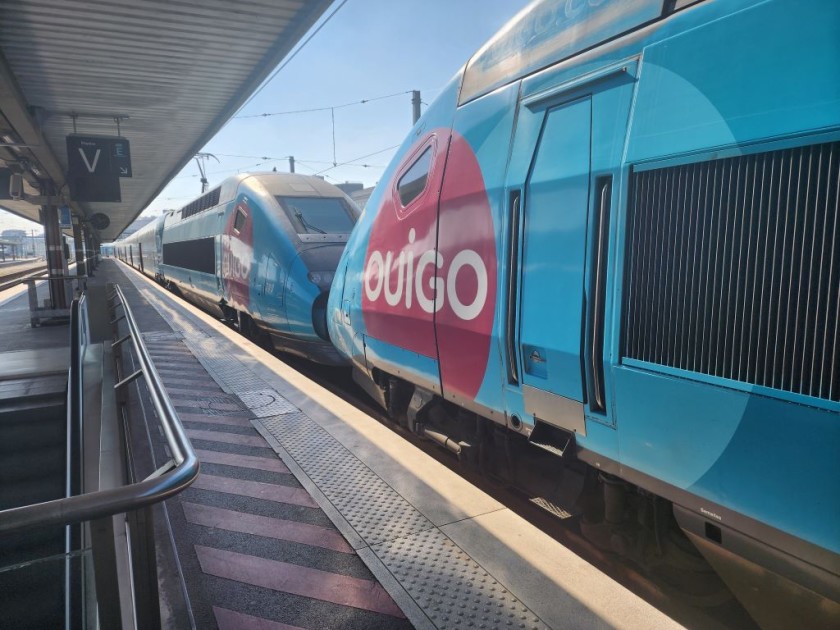
The international services:

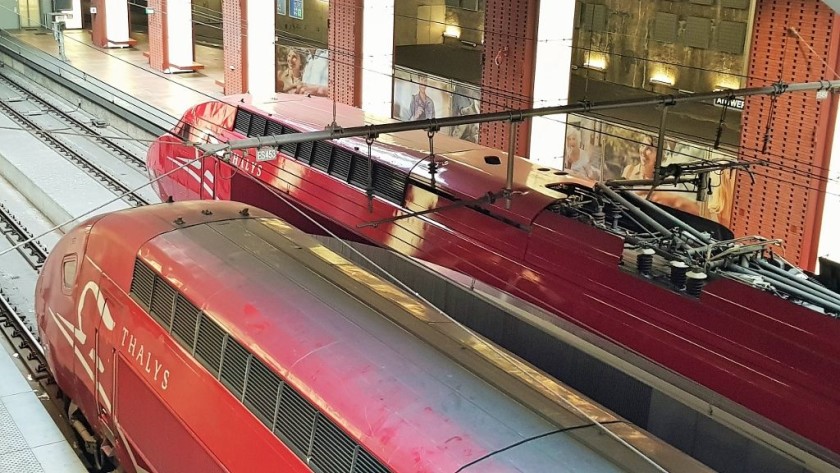
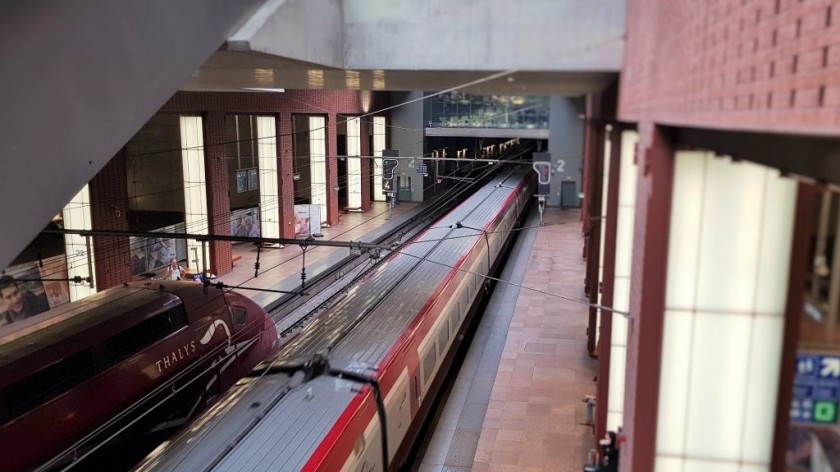
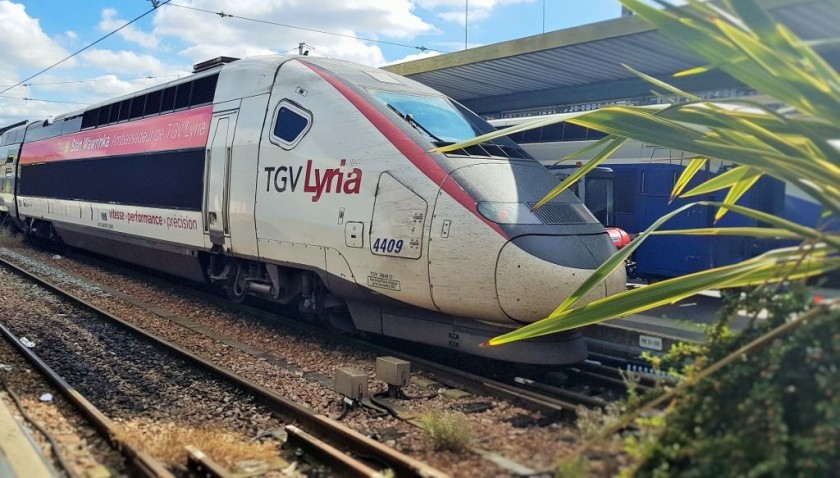
TGVs are also used on multiple international train services to/from France, which are given these specific brand names;
(1) DB-SNCF between Paris/Strasbourg and western Germany*
(2) Lyria between Paris/Dijon and Switzerland
(3) RENFE-SNCF between France and Spain*
(4) TGV France - Italy between Paris/Lyon and Torino/Milano
(5) Thalys between Paris and Belgium, northern Germany and The Netherlands
*Other types of high speed train are also used on some routes taken by these services
The routes taken by each type of TGV:
These lists are summaries and journeys taken by these trains often extend beyond the routes we have singled out below.
the POS trains:
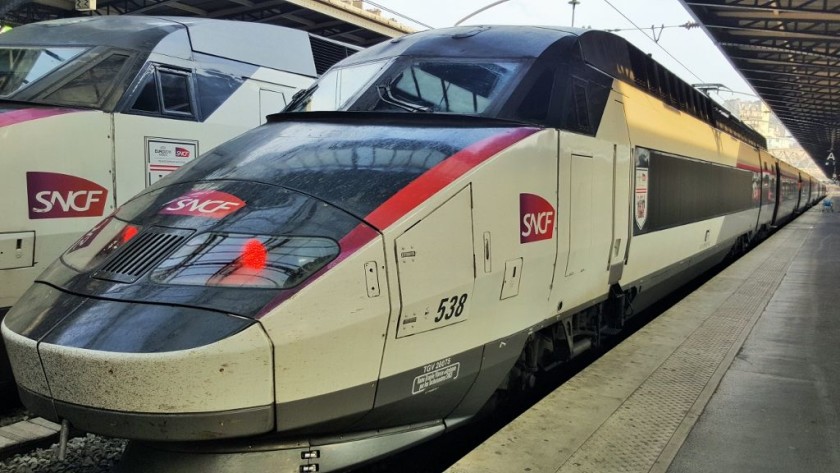
It’s LIKELY that you will travelling by TGV POS trains on these routes;
(1) Paris Est - Reims
(2 Paris Nord - Dunkerque and Boulogne and Tourcoing via Lille Europe
(3) Strasbourg <> Bordeaux and Lille and Nantes and Rennes
Note that's a fairly short list.
This type of TGV train used to operate the majority of the 'Lyria' services between Switzerland and Paris, but they're now used on a few domestic routes where double-deck trains aren't required.
the Duplex trains:
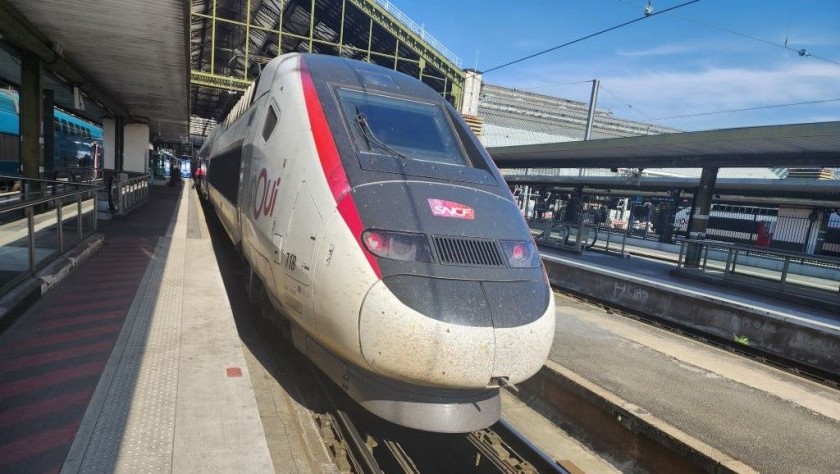
You will almost certainly be travelling by double-decked TGV Duplex trains on these routes;
(1) Paris Gare De Lyon - Besancon and Lyon and Marseille and Montpellier and Nice and Perpignan and Aix-les-Bains and Annecy and Grenoble
(2) Paris Est - Strasbourg - Colmar
(3) Paris Est - Nancy
(4) Paris Est - Luxembourg
(5) Paris Nord - Lille (Flandres)
(6) Lille - Bordeaux and Lyon and Marseille and Montpellier and Nice and Rennes and Nantes
(7) Marseille/Lyon - Nantes/Rennes
(8) Marseille/Lyon - Strasbourg/Luxembourg
(9) Toulouse - Lyon via Montpellier
the Atlantique trains:

You may be travelling by TGV Atlantique trains on journeys between Paris - La Rochelle and Le Croisic and Tours
the Océane trains:

If you'll be taking a train which travels non-stop between Paris and Bordeaux, then it's now almost certain that you will be travelling on a TGV Océane train.
Many journeys taken by TGV Océane trains also extend beyond Bordeaux to and from other destinations.
So it's likely that you will be travelling by these trains if you take a TGV between Paris and Bayonne or Biarritz or Hendaye or Lourdes or Tarbes or Toulouse.
These trains are also now being used for some departures on these routes:
(1) Paris - Rennes - Quimper
(2) Paris - Rennes - Brest
(3) Paris - Nantes
the Reseau trains:
These trains are used on services between Bruxelles/Brussels and cities in France other than Paris, including Lyon, Marseille, Montpellier, Nice and Strasbourg.
Checking the type of TGV you will be travelling by:
This second version of ShowMeTheJourney is exciting and new, so we are genuinely thrilled that you are here and reading this, but we also need your help.
We’re striving not to let anything get in the way of providing the most useful service possible, hence a facility has been set up with DonorBox which can be used to support the running costs and make improvements.
Instead of advertising or paywalls, your financial support will make a positive difference to delivering an enhanced service, as there’s a lot of ideas which we want to make happen.
So if you have found the info provided here to be useful, please consider saying thank you.

This is one of more than 100 train travel guides available on ShowMeTheJourney, which will make it easier to take the train journeys you want or need to make. As always, all images were captured on trips taken by ShowMeTheJourney.





